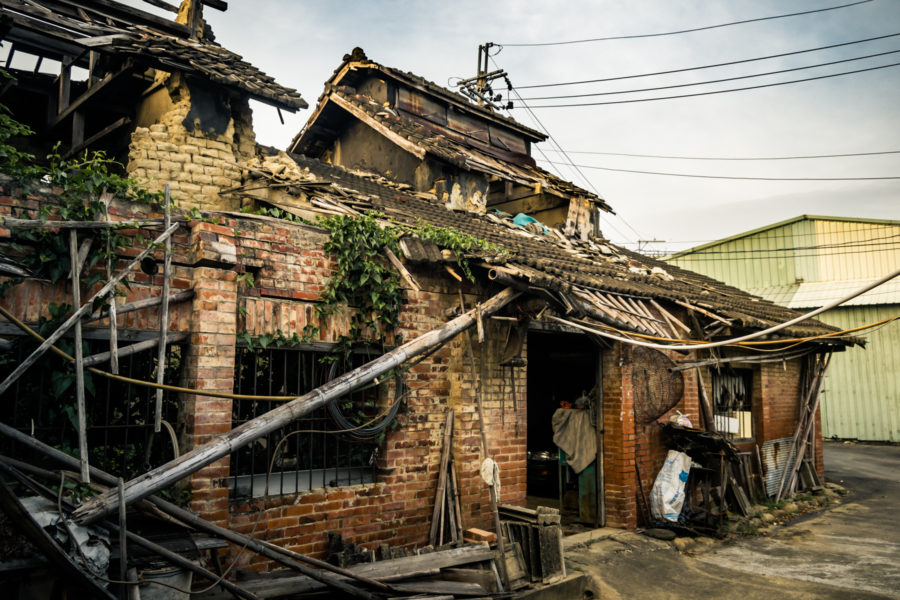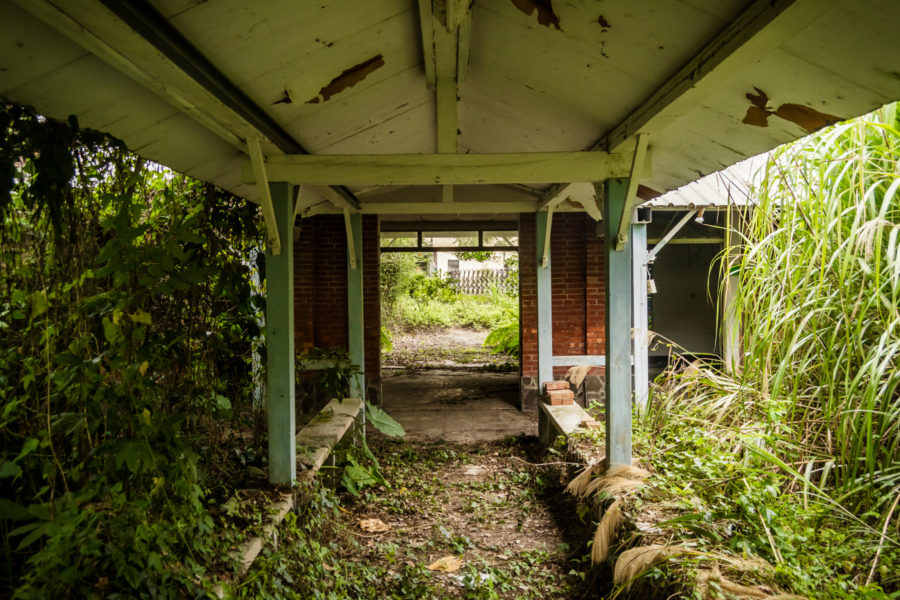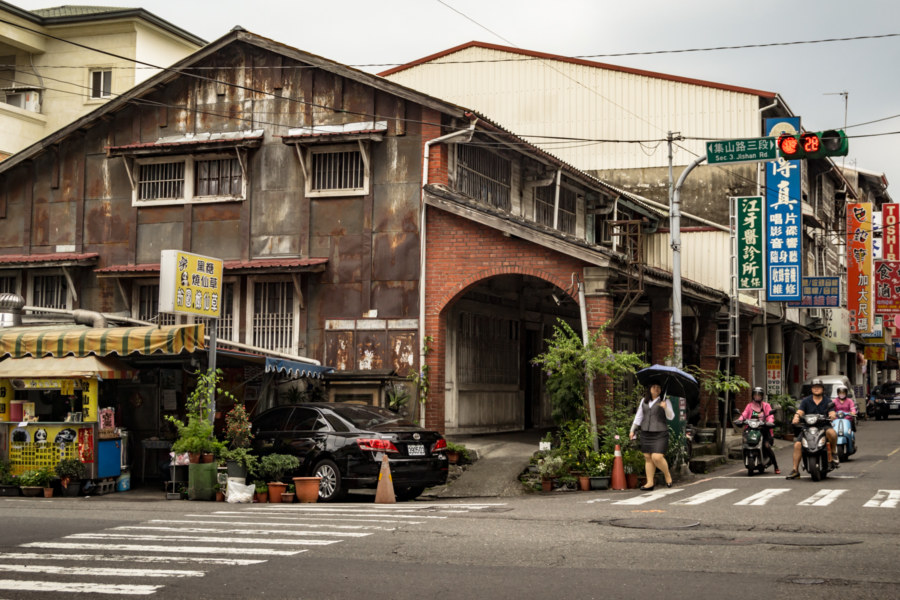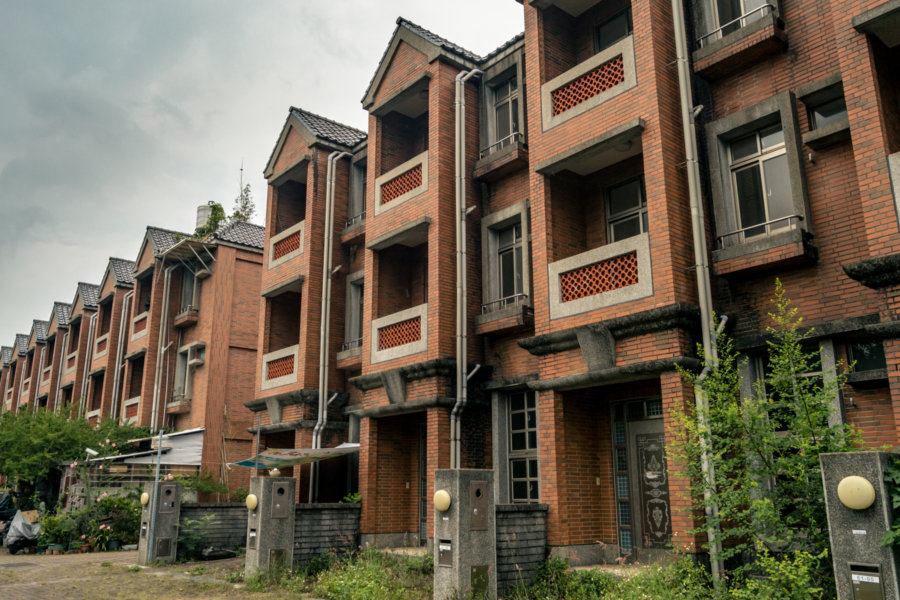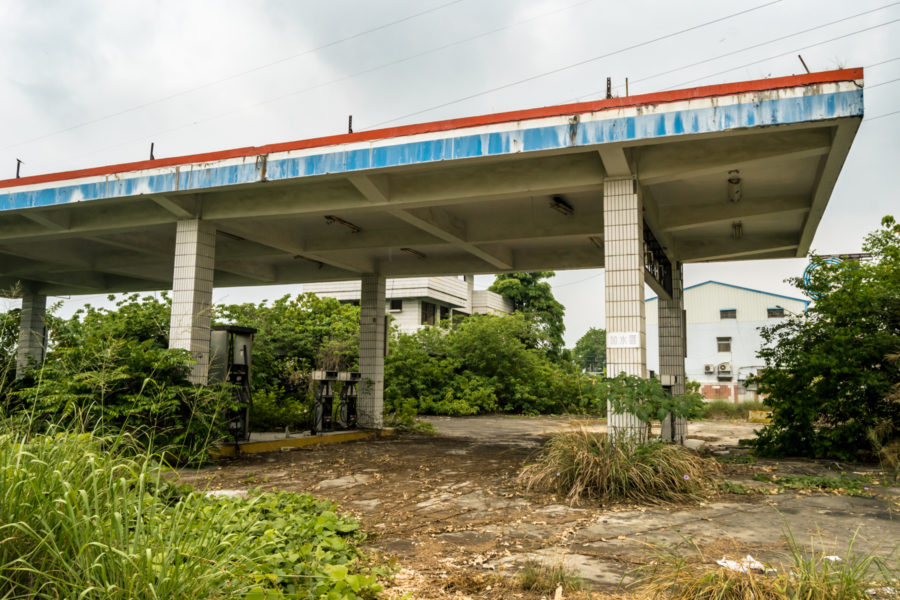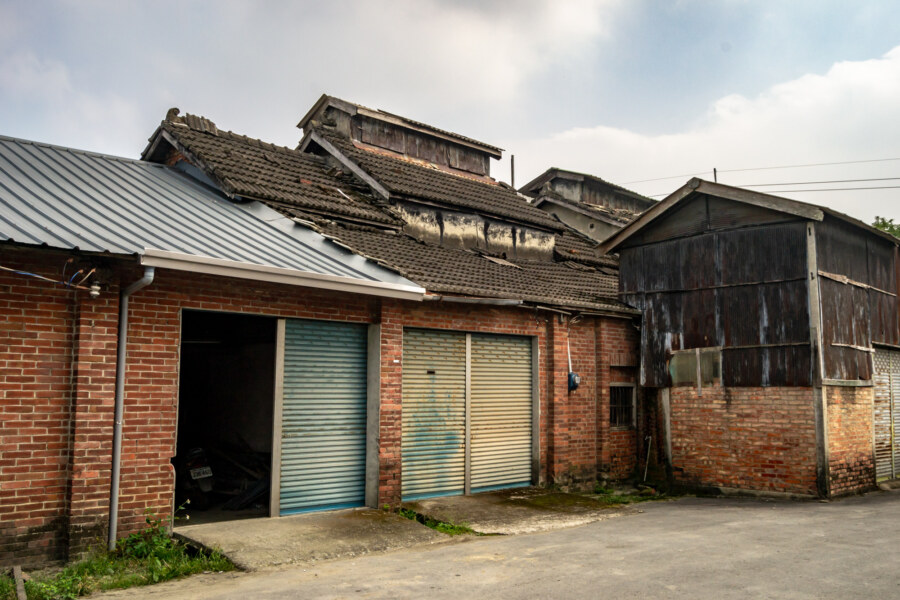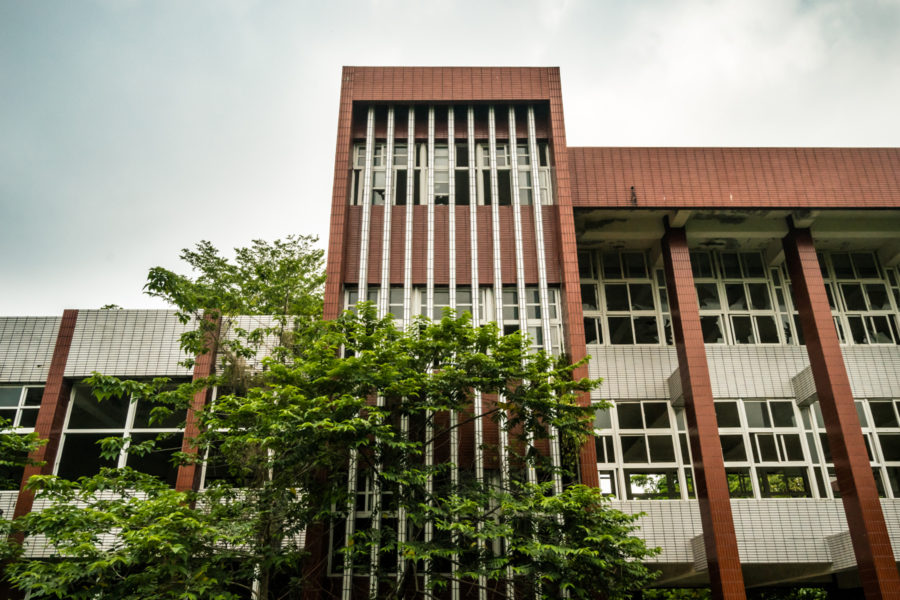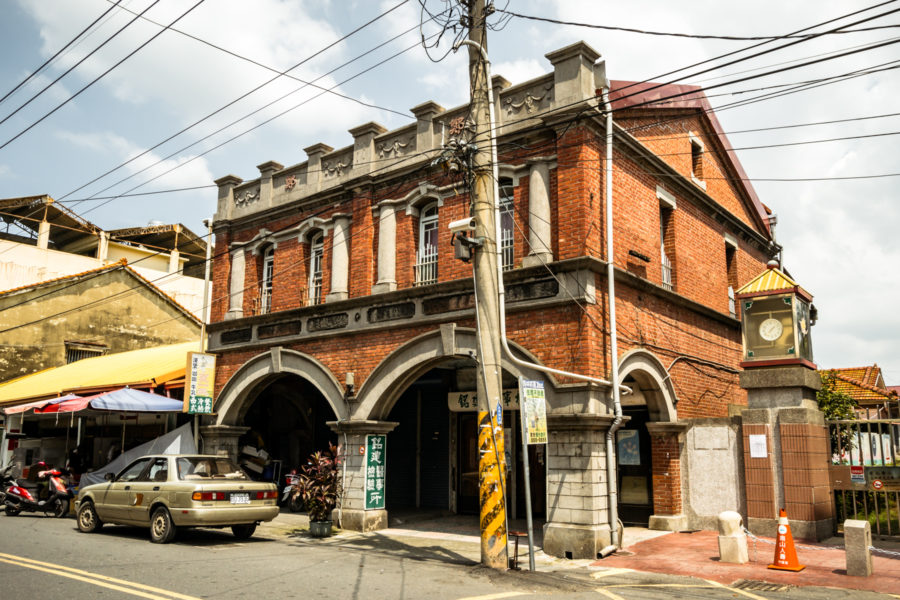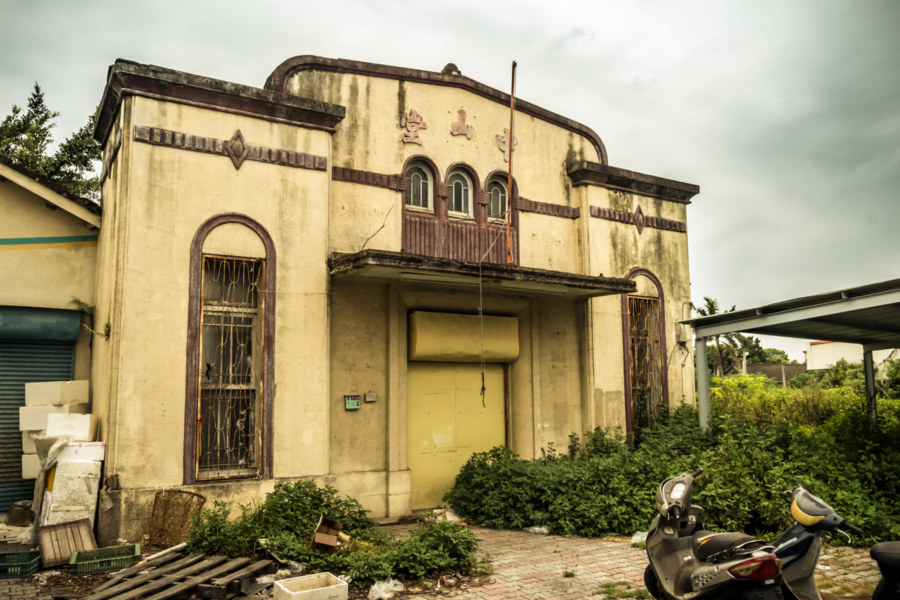In the summer of 2017 I embarked upon a series of road trips around central and southern Taiwan. I began in Taichung and ended up riding as far south as Kaohsiung over the course of several months. It was not one continuous journey; I would head south, ride for several days, stash the scooter at a train station, and return to my residence in Taipei before doing it all over again. There wasn’t a lot of planning involved, nor were these trips entirely random. Usually I had some idea of what to see and where to go, but there were also many serendipitous discoveries along the way. Ultimately I gathered material for more than 50 posts, many of which have already been published. This introductory post gathers an assortment of photos from the first segment of the trip from Taichung to Nantou, with particular emphasis on the districts of Taiping, Puli, and Shuili.
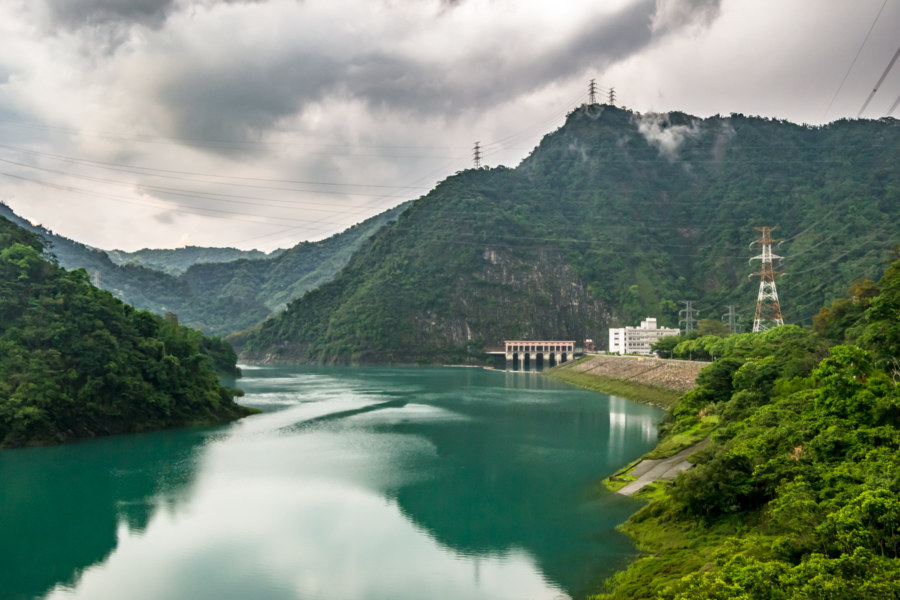
In the summer of 2017 I borrowed a scooter to ride to a music festival in Nantou and didn't return it for several months. It wasn't a continuous road trip—I'd leave the scooter parked at various HSR stations as I slowly made my way around central and southern Taiwan—but each leg of the trip usually involved 3 or 4 days of riding. In the end I gathered enough material for 60 or 70 posts, only some of which have been published.
Dongping Tobacco Barn 東平菸樓
Only traces remain of the tobacco cultivation and manufacturing industry in Taichung, Taiwan. For the better part of a century tobacco was cultivated across wide swathes of the Taichung Basin 台中盆地, cured on location, sold at regional marketplaces, and shipped to factories for further processing into cigarettes and other tobacco products. Taiwan’s accession to the WTO in 2002 marked the end of domestic tobacco production but the industry was already in steep decline, a consequence of globalization and the end of the government monopoly system in preceding decades. Several buildings related to Taichung’s tobacco industry have earned heritage status in recent years—but this decaying tobacco barn hidden down an laneway in Taiping, a suburban district on the eastern side of the burgeoning metropolis, is not among them.
Puli Tuberculosis Sanatorium 埔里肺結核療養所
Tuberculosis remains the deadliest communicable disease in Taiwan, claiming approximately 600 lives per year, but great strides have been made in reducing its toll throughout the 20th century. Nearly 5% of the population were afflicted by the disease in the late 1940s—and with an annual mortality rate of 3 in 1,000, it was also among the leading causes of death of any kind in post-war Taiwan. The disease was especially prevalent among the Taiwanese Indigenous people of the remote mountainous interior, who simply couldn’t afford to see a doctor or purchase medicine (even if there were a clinic anywhere nearby).
Christian missionary organizations went to great lengths to expand access to medical services in the late 1950s, founding numerous clinics and sanatoriums in Indigenous territory all across Taiwan. In 1957 this particular tuberculosis sanatorium was constructed next to a secluded lake on the outskirts of Puli, Nantou, to provide free treatment and relief for people of the mountains. The next several decades saw great advances in healthcare in Taiwan and the sanatorium closed in 1980, its purpose fulfilled. It reopened as a Presbyterian retreat center and campground in the late 1980s and was ultimately abandoned to the elements sometime in recent years.
Postcards From Zhushan 竹山明信片
Zhushan (literally “Bamboo Mountain”) is a historic yet obscure township in southwestern Nantou mainly known for cultivating tea and bamboo. The town itself is one of the oldest in central Taiwan but it hardly feels that way. Many of Zhushan’s most historic structures were destroyed or damaged beyond repair in the devastating 921 Earthquake that struck in 1999, which is why its “old street” is lined with modern buildings. Most travellers pass through Zhushan on the way to attractions deeper into the rugged interior of Taiwan without sparing it a second glance—but I stopped for a closer look in the summer of 2017 while on an impromptu road trip. After staying the night in a sleazy love motel never meant for sleep (there was no way to switch off the lights) I wandered around in the morning haze, capturing traces of Zhushan’s history as it disappears into memory.
Kezikeng New Community 柯子坑新社區
Located on the outskirts of Zhushan, Kēzikēng New Community 柯子坑新社區 is one of several public housing projects constructed in the aftermath of the 921 Earthquake that devastated central Taiwan in 1999. Despite providing much-needed relief for those who lost their homes in the disaster there were few buyers—and today the complex remains mostly empty and disused. Built with government funds, this poorly-conceived housing project has become yet another example of what Taiwanese call mosquito halls, a term popularized by artist Yao Jui-chung 姚瑞中 and a team of student researchers known as Lost Society Document. Since 2010 they have published six volumes of Mirage, a series of works identifying more than 800 disused public properties all around the country. Some of their work was translated into English—which is how I found out about this particular locale, which I briefly visited in the summer of 2017.
Nanyun Gas Station 南雲加油站
Nányún Gas Station (南雲加油站) is one of hundreds of abandoned gas stations found all around Taiwan. It was formerly affiliated with CPC Corporation (台灣中油), a state-owned enterprise that controls or supplies 80% of gas stations in the nation, and located on a section of Provincial Highway 3 in Yunlin known as Línshān Highway (林山公路), for it connects Linnei with Zhushan in neighboring Nantou. It was likely abandoned more than a decade ago, and for reasons that are less mundane than you might expect.
Postcards From Linnei 林內明信片
Linnei is a small rural township located on the south side of the Zhuoshui River in northeastern Yunlin, Taiwan. Despite its strategic position on the Western Trunk Line this township remains mostly pastoral and undeveloped, with little industrial activity compared to neighboring Douliu, the administrative seat of the county. Population in the township peaked at nearly 23,000 in the 1970s and has been declining ever since, recently falling below 18,000 as rural flight continues apace. Nowadays the local economy mostly revolves around agricultural products such as rice, bamboo, and tea, but Linnei was once a major center of tobacco cultivation, traces of which can be found scattered across the countryside.
Yixin Vocational High School 益新工商職業學校
Yìxīn Vocational High School (益新工商職業學校) is a relatively obscure but not entirely unknown ruin in central Taiwan. Located along the main road running through Linnei, Yunlin, it seems to have been abandoned in the aftermath of the devastating 921 Earthquake, nearly two decades ago. Many schools were destroyed in the quake and scores more were condemned (most famously an entire university campus in Dongshi) but whether this particular school suffered the same fate isn’t certain.
Postcards From Ershui 二水明信片
Ershui is a rural township located in the southeastern corner of Changhua, bordering Yunlin and Nantou. Ershui Station 二水車站, constructed in 1935, is the primary point of transfer between the Main Line 縱貫線 of the Taiwan Railway Administration (TRA) and the Jiji Line 集集線, a tourist railway leading into the interior. Ershui, which literally means “two water”, is named after the Bābǎo Canal 八堡圳, an extensive system of artificial waterways still responsible for irrigating much of the Changhua Plain 彰化平原 three centuries after it was devised. During the Japanese colonial era this small town prospered as a center of woodworking while farmers in the countryside cultivated bananas, grapes, guava, and tobacco, among other crops. Nowadays it is mainly known as a sleepy stopover on the way to parts beyond—but a closer look will reveal several points of interest for anyone curious about Taiwanese history, architecture, and vintage style.
Ershui Assembly Hall 二水公會堂
Ershui Assembly Hall 二水公會堂 is located in Ershui, a small town at the very southern edge of Changhua, on the border with both Yunlin (to the south) and Nantou (to the east). It is one of approximately 70 assembly halls built all around Taiwan to accommodate large public gatherings during the Japanese colonial era. This particular example was built in 1930 and is one of three remaining in Changhua. The other two—in Changhua City and Lukang—are both fully restored heritage properties open to the public, but the smaller Ershui Assembly Hall has been derelict for years, a consequence of a long-running legal dispute between the landlord and local government complicating preservation efforts.

